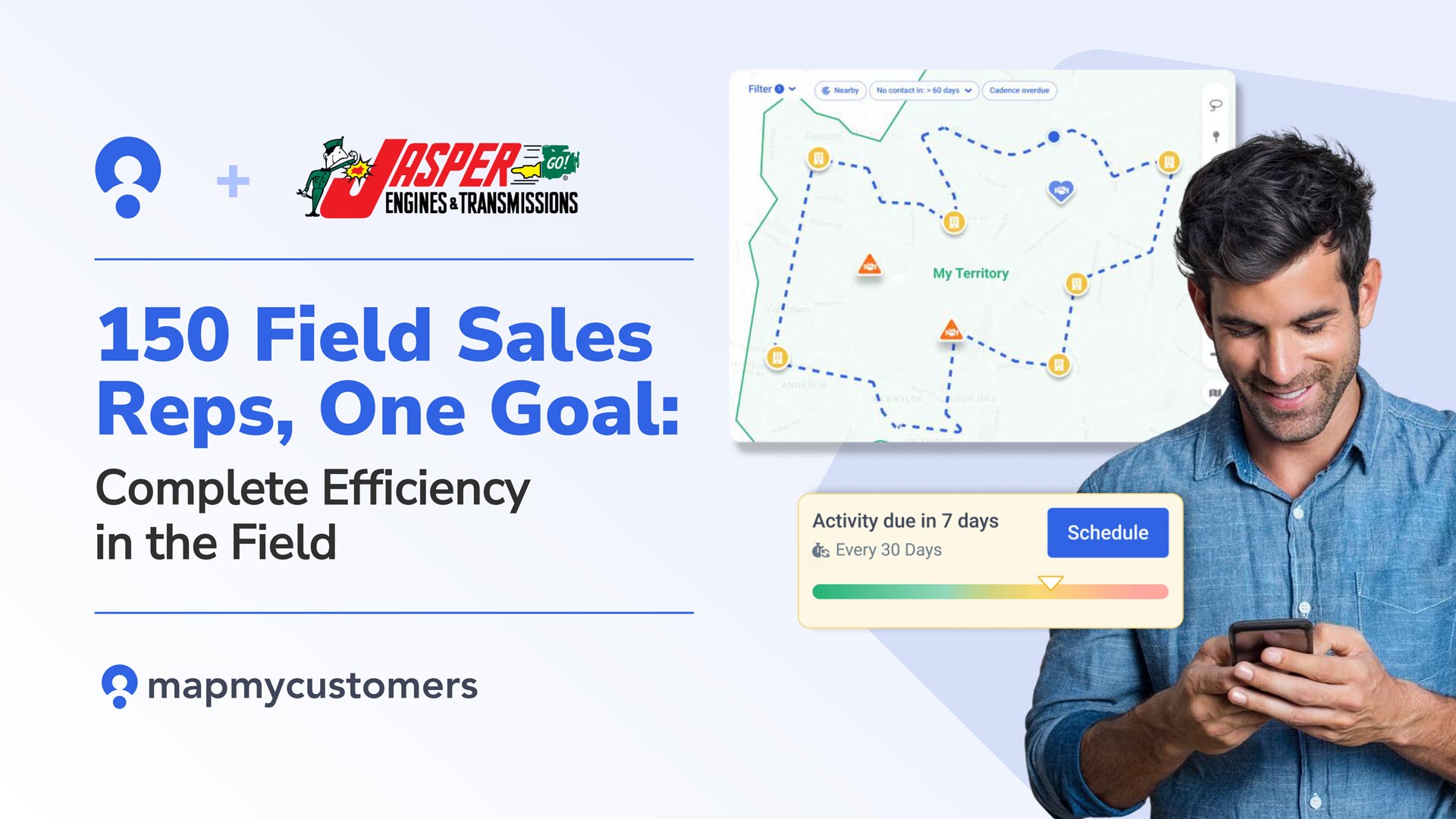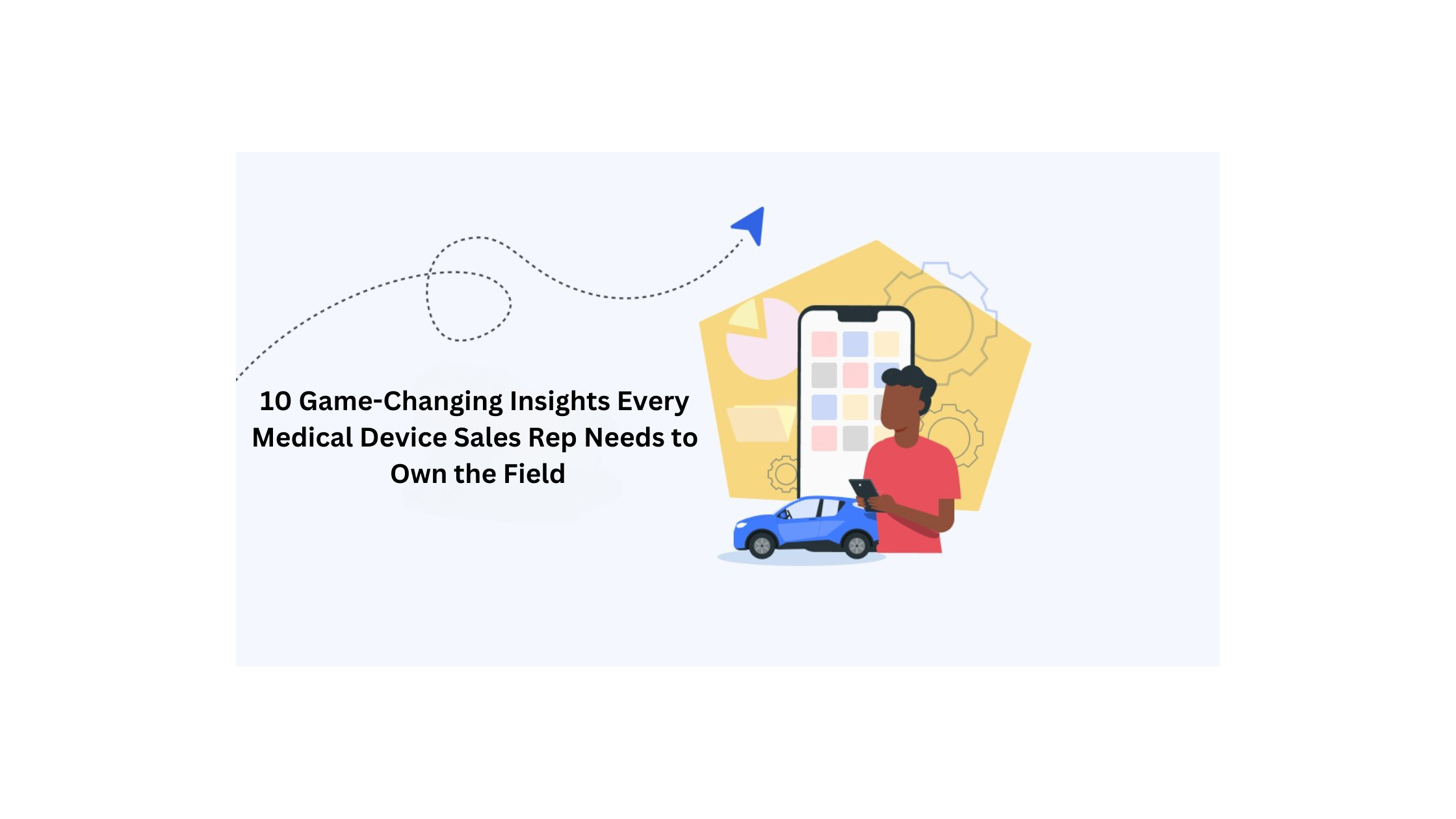Data lovers, meet location intelligence.
Location intelligence is one of the hottest trends in machine learning—and it’s a match made in nerd-heaven for us outside sales folks.
From opportunity visualization and sales territory management to route optimization — location intelligence is our ticket past spreadsheets and toward geospatial visualizations. Like any good analytics tool, location intelligence delivers valuable insights into increasing efficiency, maximizing revenue and unlocking unrealized potential.
In this post, we’ll tell you everything you need to know about location intelligence, including how your sales team can use it to drive sales.

What is location intelligence?
A study by Pitney Bowes revealed that about 80% of all data owned by businesses has a location component—the only thing that’s left to do is use it. Location intelligence is about not only pulling out that information but making it actionable.
Simply put, location intelligence (or LI) uses people and technology to map out data in order to find trends and actionable insights. In a sales context, this falls into the umbrella of “sales mapping” and is done by cross-referencing sales data with geography (or “geospatial information,” if you’re feeling techy).
In its simplest form, mapping out sales data points geographically is helpful for identifying patterns and trends. For example, imagine you wanted to open a Tesla store but didn’t know where. This map below would be helpful to you as you made your decision.
Source: Yahoo Finance
However, location intelligence takes this type of information a step further by referencing other critical data points. When we talk about location intelligence as a machine-learning sales tool, we’re dealing with much more complex numbers and much more specific locations.
Artificial intelligence tools are capable of juggling much more information than we can on our own. Location intelligence uses this ability to stack multiple types of data on top of each other geographically.
To return to our Tesla store example, instead of looking at a simple map like the one above, with location intelligence, you may create a map that analyzes the market by capturing dozens of other data points at once, like:
- Sales rates
- Average income levels
- Market saturation
- Commodity locations (like power stations, in Tesla’s case)
- Demographics
- etc.
To get a better sense of what this may look like in action, take a look at this map by OmniSci (one of the leading names in data analytics and mapping technology).
Source: OmniSci
As you can see, there’s a lot more happening on this map than the one above. By just glancing at the graphic, it’s possible to easily spot hubs around the city centers, separate different territories, identify that places of activity correlated with major transportation lines, etc.
Now, imagine trying to navigate all of this data in a list. It would take much, much longer to make heads or tails of the information.
In general, location intelligence is helpful because it gets data out of linear spreadsheets and into physical space. It enables analysts to see trends they may not have otherwise known to look for and, importantly, helps them to figure out what new questions to ask.
Why should your sales team use location intelligence?
We’ve already loosely touched on how you might use location intelligence for choosing a new store location. But beyond this, why is location intelligence helpful for salespeople?
Broadly speaking, a lot of the benefits of using location intelligence in a sales context correlate with the benefits of data visualization in general—which largely hinge on the fact that the human brain processes visuals about 60,000 times faster than raw words and numbers.
Location intelligence in sales encompasses a tactic known as “sales mapping.” In the past, sales mapping has meant representing your data geospatially. But there are some finer points that make location intelligence uniquely helpful.
Identify actionable trends
This is one of the most obvious use-cases for location intelligence within a sales team, but it’s also one of the most powerful. Like with any sales analytics tool, the whole point is to find insights to act upon. We aren’t just looking at pretty charts!
When looking at maps created using location intelligence in general, your reps may use it to accomplish things like:
- Identify pockets of untapped potential within the market
- Uncover unexpected correlations (like how weather or traffic relates to sales rates, etc.)
- Pinpoint how your market saturation compares to your competitors’
- Evaluate if specific sales strategies work best in specific areas
Your team constantly wants to find and create more opportunities for themselves, and this gives them the ability to see it represented visually—a sales strategy known as opportunity visualization.
Evaluate current sales efforts
As salespeople, we’re constantly trying new things with the intent to optimize our actions. We want to double-down on what’s effective and cut what’s not. But what actually works and why?
If you’re only looking at data in a spreadsheet, some trends may slip under the radar. For example, you may notice that a specific upsell works better in the city center than in the suburbs. Then, you can use this information to optimize your current efforts for specific places.
On a more technical level, location intelligence allows you to do a deep-dive into sales territory management. Not only can you see how one territory compares to another, but you can also break down territories into subsections within them.
You may notice, for example, that it makes sense to change the boundaries of your sales territories to create more similar groups. Or, you might notice that identifying sub-territories within your larger territories enables reps to develop optimized sales techniques.
Streamline processes
When you understand your data more deeply and quickly, you’re more efficient. You save time and headaches and can pinpoint your efforts on tasks that actually work.
Unlike any other type of data analysis, location intelligence can help you to optimize how you move through physical space—that is, you can:
- Optimize your driving routes to save time and fuel
- Build smart daily schedules to help you determine which clients to visit when
- Map out more efficient sales territory boundaries—and manage them more effectively
It’s all about using technology to save time, money and frustration for your team.
Share data with leads
Lastly, just like sales reps, leads respond better to easy-to-understand visuals than numbers in a spreadsheet. When you’re trying to win over a new client (or upsell a current one), compelling graphics are a great way to present relevant data.
For example, you may choose to show your leads how a particular offering is extremely effective for other businesses in regions with similar demographics.
How can your sales team use location intelligence today?
Now that we’ve taken a look at what location intelligence is and why it’s useful, it’s time to look at how to implement it to your team’s day-to-day.
Here are two great places to start if you want your team to use location intelligence right now to drive sales.
Data visualization
Data visualization is the prime use-case for location intelligence. Data visualization is the movement of data from linear spreadsheets and representing it visually to help you identify trends. This can include:
- Graphs (bar, scatterplot, line, pie chart, etc.)
- Word clouds
- Diagrams
- Videos
- Charts
- And, of course, maps
Location intelligence focuses almost entirely on the last example: maps. You can create maps easily by plugging your data into CRMs with mapping abilities, like Hubspot or Map My Customers.
Of course, there are also hyper-specialized location intelligence platforms, like OmniSci. Platforms like OmniSci can unearth stunning insights. However, these are only usually worth the cost if you are dealing with a ton of data on a massive scale and have the ability to dedicate an entire team to the efforts.
Instead, for the vast majority of outside sales teams, we suggest using a CRM with data mapping abilities, as your data is already in one place and no extra cost or work is needed on your part.
Source: Map My Customers
Opportunity visualization
As the name implies, opportunity visualization is when you use data visualization to look at potential wins for your business—like new leads or cross-sells / upsells. This can encompass any of the types of data visualization mentioned above.
Opportunity visualization (whether based on location or not) can bolster the efforts of your sales team by:
- Identifying targets and action-steps
- Creating accountability for your sales team
- Clarifying goals and creating clarity of vision within your sales team
Location intelligence empowers your sales team to visualize opportunities by stacking data with geographical components on top of one another. For example, you may consider:
- Demographics (language, income level, etc.)
- Population density (rural, suburban, or urban)
- Weather
- Traffic
- Locations (of competitors, of current clients, etc.)
- Market saturation
Your objective is to help your sales team identify opportunities for them to pursue. And you might be surprised by the correlations and trends your team finds!
Action Steps
Set your sales team up with a CRM that has data mapping abilities. Once your team is using it on a regular basis and has enough data points, try cross-referencing other location-based data points. Start with what you think is most likely to be connected to your business and then explore more out-of-the-box ideas.
For example, you may know from experience that your team tends to sell more in high-income areas, so look at that first. See if your hypothesis holds water — and, if it does — find other untapped high-income areas to target next.
Route Optimization
Route optimization uses location intelligence in a more nuanced way. By layering several different pieces of geospatial data on top of one another, artificial intelligence tools can map the best possible way for you to meet with a list of clients.
Having location intelligence tools take care of this for you is much more preferable than spending an hour playing with Google Maps to try different routes. Your software can cross-reference dozens of data points at once, like:
- Traffic patterns
- Roads
- Speed limits
- Several target locations
- Meeting times / lengths
- Construction
- Police activity
- Fueling locations
Better routing saves time and frustration, yes, but there are other tangible benefits for your business as well, like:
- Providing better customer service by being able to respond and adapt to urgent needs faster
- Boosting team morale (nobody likes to spend hours stuck in traffic every day)
- Decreasing transportation costs (less money spent on fuel and more time spent selling)
Action Steps
There are many options you can use today to start creating smarter maps, like Map My Customers, Spotio, Salesforce Maps, etc. So before your sales team hits the road next, encourage them to plug their different accounts into one of these platforms in order to create their optimal travel schedule.
As an added bonus, if something comes up in the middle of the day—like one client cancels or asks to reschedule—your software can make any necessary adjustments for you automatically.
Conclusion
The number one thing to keep in mind with location intelligence is that, as of yet, no artificial intelligence can completely replace your team’s creative and critical thinking. It’s a learning process in which insights beget more insights.
As such, it’s important to foster an environment in which your team feels excited to share their successes.
For example, if one salesperson discovers that there’s a major correlation between sales and proximity to the city center, it’s advantageous if they share it with the team rather than keep it to themselves. That way, everybody can benefit from and even build on that knowledge!
Empower your team with the ability to use location intelligence tools to support their sales efforts and then get them started by mapping out their data geographically to find rich opportunities and optimize their travel plans.





